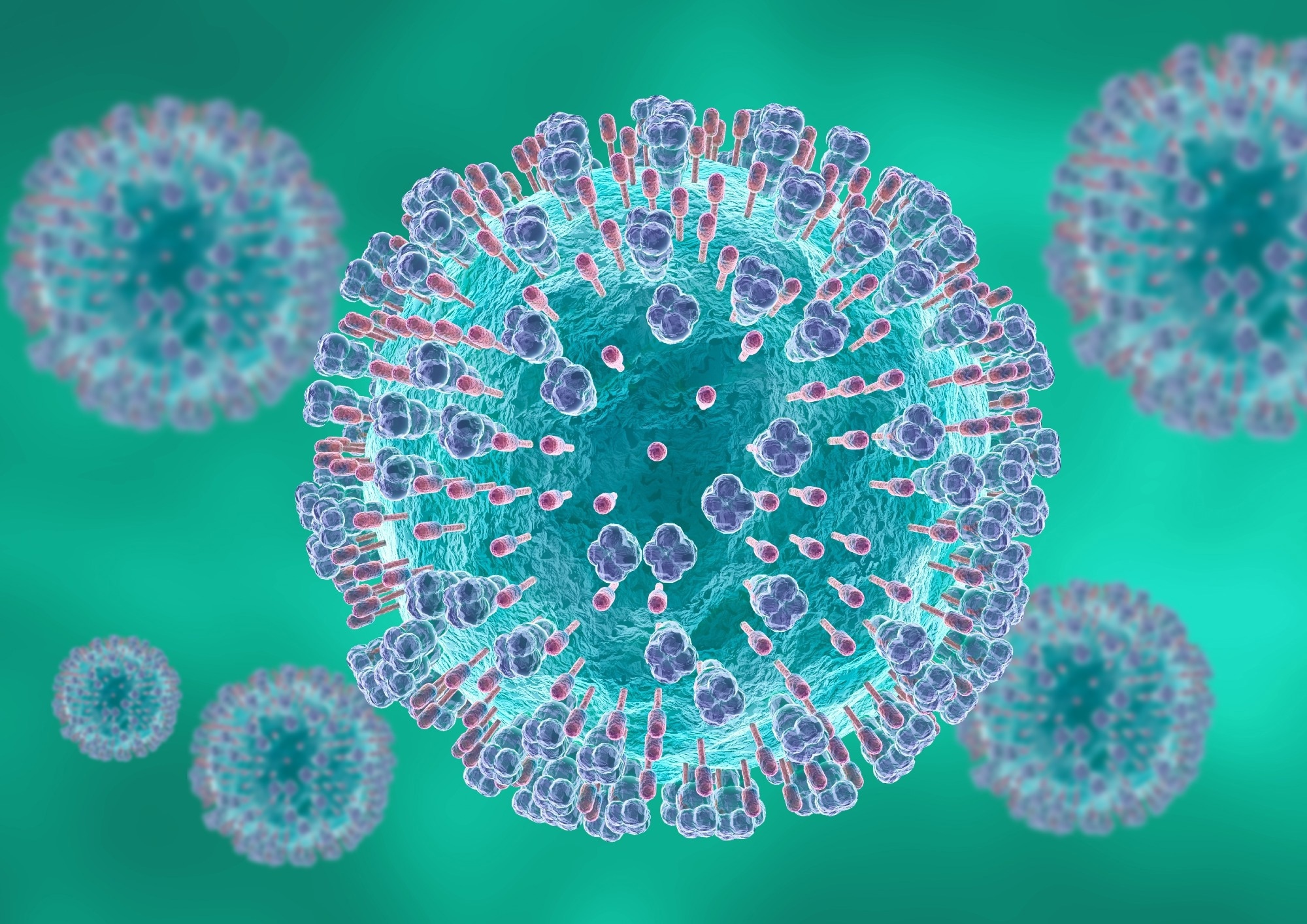In a recent study published in Scientific Reports, researchers use immunoinformatics tools to computationally design a polyvalent multi-epitope vaccine against the respiratory syncytial virus (RSV) subtypes RSV-A and RSV-B.
 Study: A computational approach to design a polyvalent vaccine against human respiratory syncytial virus. Image Credit: Adao / Shutterstock.com
Study: A computational approach to design a polyvalent vaccine against human respiratory syncytial virus. Image Credit: Adao / Shutterstock.com
Background
The human RSV, which belongs to the Paramyxoviridae family, is the major cause of lower respiratory tract infections like bronchitis and pneumonia in infants and children, as well as immunocompromised adults and seniors.
RSV is an enveloped, single-stranded ribonucleic acid (RNA) virus with two subtypes, including RSV-A and RSV-B. RSV-A and RSV-B can cause reinfections, as the cross-reactivity of immune memory against one subtype is only partial against the other subtype.
Recent statistics from the World Health Organization (WHO) indicate that RSV infections and associated lower respiratory tract infections are responsible for over three million hospitalizations among children and close to 60,000 deaths every year.
Despite ongoing vaccine efforts, no vaccines that have been against RSV that have been approved for clinical use. Additionally, anti-infective drugs against RSV have generally been used in palliative care.
The humanized monoclonal antibody palivizumab and ribavirin are two antivirals used to treat RSV infections. However, the efficacy of these drugs against severe infections can be low, thus highlighting the urgency to develop vaccines against RSV.
About the study
In the present study, researchers target the nucleoprotein, phosphoprotein, major surface glycoprotein, and fusion glycoprotein, which are some of the most virulent.
RSV proteins to design the polyvalent subunit vaccine.
The fusion protein, along with the major surface glycoprotein, enables viral entry into the host cell by mediating viral attachment onto the host cell and subsequent fusion between membranes. The nucleocapsid protein encloses the viral genome, while the phospholipid protein ensures proper transcription and replication by mediating the RNA polymerase function.
The viral strains of RSV and their proteins were identified from the National Center for Biotechnology Information (NCBI) database. These proteins were used to retrieve sequences for the four target proteins for RSV-A and RSV-B from the Universal Protein Resource (UniProt) database.
The antigenicity and biophysical properties of the selected proteins were tested. The B- and T-cell epitopes were predicted using the RSV-A protein sequences. Fully conserved epitopes were used to construct the polyvalent vaccine to ensure that immunity was confirmed against both subtypes of RSV.
Further analyses were based on the major B-cell, cytotoxic T lymphocytes of major histocompatibility (MHC) class-I, and helper T lymphocytes or MHC class-II epitopes.
The best epitopes were selected based on properties such as non-toxicity, antigenicity, non-homology to the human proteome, conservancy, and non-allergenicity. Appropriate linkers were used to construct the polyvalent vaccine using selected B- and T-cell epitopes. Secondary structures such as the α-helix, coil structure, and β-sheets were also analyzed.
The modeled vaccine structure was validated using z-score and Ramachandran plots. The B-cell epitope conformation, post-translational modifications such as glycosylation, and protein-protein docking were also analyzed.
Molecular dynamics simulations were used to test the performance and behavior of the vaccine in a simulated environment, while immune simulations were employed to study interactions of the epitopes and the targets and adaptive immunity.
Study findings
The polyvalent vaccine designed against RSV was found to be antigenic, stable, and hydrophilic. Furthermore, the rigorous safety tests indicated that the vaccine was non-toxic, non-allergenic, and provided broad-spectrum immunity against the two subtypes of RSV.
The helper T lymphocyte epitopes that were used to construct the RSV vaccine successfully elicited the production of cytokines such as interferon-gamma (IFN-γ), interleukin 4 (IL-4), and IL-10, which play an essential role in the modulation of immune responses against RSV and other viral infections.
The pathogenesis of RSV is closely linked to the pro-inflammatory IFN-γ, which prevents the obstruction of airways and limits RSV replication. In contrast, the anti-inflammatory cytokine IL-10 restricts the production of pro-inflammatory cytokines to prevent subsequent tissue damage due to inflammation, whereas IL-4 promotes antibody production and the differentiation of T helper cells.
The global binding energies for the interactions between the epitopes and specific Toll-like receptors were found to be suitable in the molecular docking analysis. Moreover, molecular dynamics simulations revealed that the docking between Toll-like receptors and the vaccine was stable.
Conclusions
The RSV vaccine designed using immunoinformatics tools had strong potential antigenicity and stability and would not result in adverse reactions. However, additional in vivo and in vitro experiments are needed for the efficacy validation of this RSV vaccine.
Journal reference:
- Moin, A. T., Ullah, M. A., Patil, R. B., et al. (2023). A computational approach to design a polyvalent vaccine against human respiratory syncytial virus. Scientific Reports 13(1); 9702. doi:10.1038/s4159802335309y